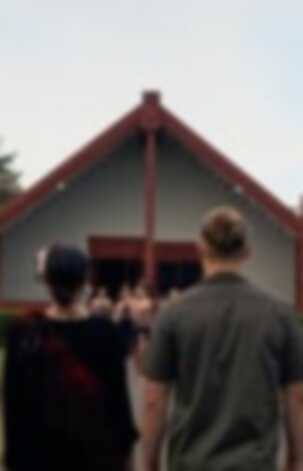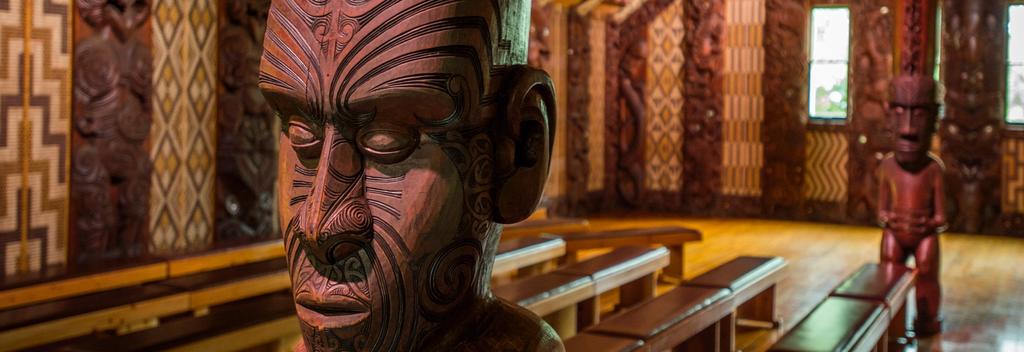-
Popular places to visit
Popular things to do
Helpful tips
Here's a few useful links to help with planning your trip to Aotearoa New Zealand.
-

Marae (meeting grounds) are the focal point of Māori communities throughout Aotearoa, New Zealand.
A marae is a fenced-in complex of carved buildings and grounds that belongs to a particular iwi (tribe), hapū (sub-tribe) or whānau (family). Māori see their marae as their tūrangawaewae - their place to stand and belong. Marae are used for hui (meetings), āhuareka (celebrations), tangi (funerals), educational workshops and other important tribal events.
A marae incorporates a wharenui (carved meeting house), a marae ātea (an open space in front), a wharekai (a dining hall and cooking area), and a toilet and shower block.

The most prestigious of the buildings within the marae is the wharenui or carved meeting house. A wharenui resembles the human body in structure and usually represents a particular ancestor of the tribe.
The tekoteko (carved figure) on the rooftop in front of the house represents the head, and the maihi (front barge boards) are the arms held out in welcome to visitors. The amo are shortboards at the front of the wharenui representing legs, while the tahuhu (ridge pole), a large beam running down the length of the roof, represents the spine. The heke (rafters), reaching from the tahuhu to the poupou (carved figures) around the walls, represent the ribs.
Many wharenui contain intricate carvings and panels that refer to the whakapapa (genealogy) of the tribe, and to Māori stories and legends. It is also common to see photos of loved ones who have passed away placed inside.
If you are lucky enough to step inside a wharenui, remember to remove your shoes before entering, do not consume food or drink inside, and always seek permission before taking photos.


The people who belong to a marae do not live there full time but will come and stay during important occasions. Marae life is very communal – everyone sleeps in the same room (usually the main meeting house) on mattresses lined against the walls. They eat together in the dining room, help with chores, and spend time together learning, discussing and debating tribal matters.


A visitor who has never set foot on a marae is known as waewae tapu or sacred feet. They must partake in a formal welcoming ceremony, called a pōwhiri, to remove the tapu (sacredness) and become one people with those of the marae.
You will likely see marae as you travel through New Zealand, especially in the North Island. You’re welcome to stop and take a look from the outside. But remember, you cannot walk on to the marae without being formally welcomed by the people of that place.